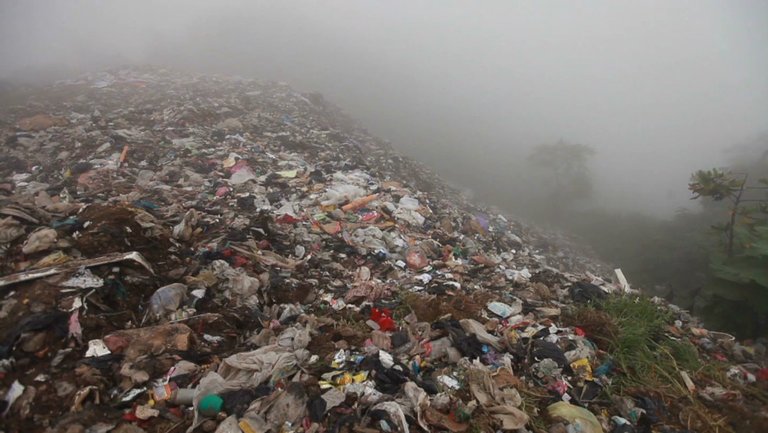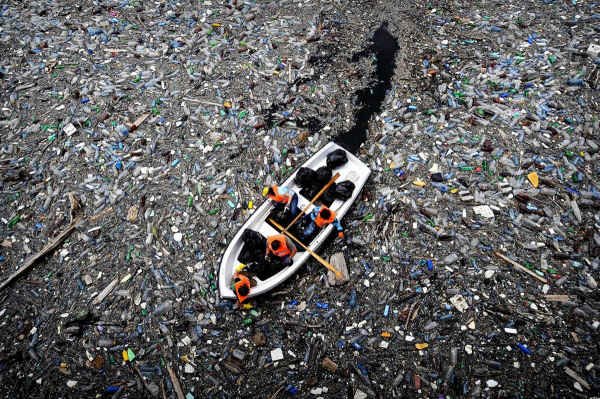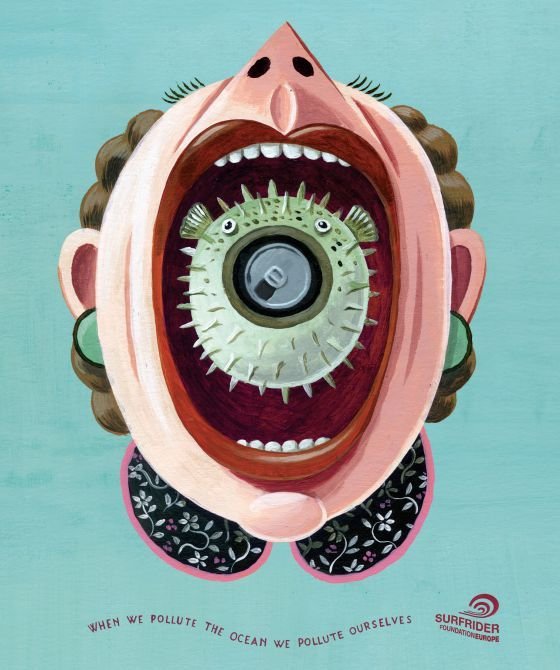Since 1950, man has produced a Himalaya of plastic
US researchers have calculated that 9.1 billion tons of plastic have been made, three-quarters of which are now wastes.

For the first time, scientists wanted to establish the inventory of plastic on earth since the very beginning of its industrial production. Frankly, it's scary. It is not a mountain of plastic that we have produced, but a "Himalayan chain"! The researchers, belonging to several American universities, have reached the astronomical figure of 9.1 billion tons, to date. To better understand the damage, one can have fun making a few comparisons. This corresponds to the weight of 1,800 pyramids of Cheops, 911,000 Eiffel towers, and 18,640 Burj Khalifa (the highest skyscraper in the world, which peaks at 828 meters).

Most worryingly, three-quarters of this material has remained on earth as waste, either in landfills or in the wild. "Most plastics are not biodegradable, so they could stay with us for hundreds of years," says Jenna Jambeck, co-author of the study. Only 9% were actually recycled and 12% were incinerated. If nothing is done to curb our bulimia in this area, the 400 million tons produced per year now, the mountain will reach 12 billion tons by 2050. That is 80 grams (two plastic bottles) for each Square meter of the surface area of the terrestrial continents.
Call to Mankind
But as we know, a good part of this plastic ends up in the oceans, where it poses considerable problems of survival to many species. The same team of researchers in 2010 estimated that the oceans had collected 8 million tons of plastic.
Of course, for some applications, this material is indispensable, but not for others. In the Science Advance magazine, the scientists behind the study are calling on humankind to reduce the use of plastic when it is not needed.
Fishermen set out amid floating garbage off the shore of Manila Bay in the Philippines

A study confirms that oceans have become a plastic soup
Scientists have calculated that particles of plastic pollute 88% of the surface of the oceans, without being able to determine their effects on marine life.
Plastic waste floating on the oceans would weigh only 7,000 to 35,000 tonnes. But they represent only a fraction of all the micro-particles infiltrated into marine life and the waters of the globe.
It was thought that the phenomenon was contained by the sea currents, but this is not the case. Micro-fragments of plastic, less than a millimeter in size, would pollute up to 88% of the surface of the oceans, according to Spanish researchers whose study appeared Monday in the United States. "Ocean currents carry plastic objects reduced to very small fragments by solar radiation, and these micro-plastics, which can remain for hundreds of years, were detected in 88% of the samples of the ocean surface during Of the Malaspina expedition in 2010, "said Andrés Cózar, one of the authors of the study and scientist at the Center for Scientific Research (CSIC) of the University of Cadiz in Spain.
The Malaspina expedition, a project led by the CSIC, has more than 400 researchers from several countries. These scientists collected nearly 200,000 samples of water, plankton, atmospheric particles and gas from 313 locations in the Indian, Pacific and Atlantic oceans at various depths of up to 6,000 meters.

Impact unknown
This research also confirmed the existence of five major convergence zones, sometimes referred to as plastic continents, where these wastes accumulate on the surface. They correspond to the five great circulations of water around the globe. These small plastic fragments often contain contaminants, such as mercury derivatives used as catalysts in the manufacture of plastic. They can be swallowed and digested by marine animals and passed through the food chain, including men.
Moreover, the abundance of waste that floats on the oceans allows many small organisms to colonize areas that they did not have access to before, they explain. But according to these scientists, "the greatest impact of this pollution on the marine ecosystem remains unknown". The main residues found in this waste are polyethylene and polypropylene, polymers used in the manufacture of everyday objects, such as bags, food and beverage containers, cooking utensils or toys.
Under the surface, where did the rest go?
Does the remedy exist?
There is the project to "clean the oceans" of a courageous young student whose funding is open to all. But some scientists are skeptical about this way of removing pollution, given the microscopic size of the waste incriminated. The only solution that has so far proved itself can only limit the problem, not the solution: produce less plastic. Meanwhile, the discharging of plastic waste into the oceans is estimated to cost at least $ 13 billion and threatens marine life, tourism and fishing, warned the UN at the opening of its first Assembly on the " Environment on 23 June in Nairobi. The sea is "a world in danger", estimates Pascal Lamy in a plea for the blue economy. The former Director-General of the WTO calls, as a member of the Global Ocean Commission, a "plastic anti-rejection program aimed directly at citizens".
However, surface contamination by plastic is less important than imagined: "The good news in all this is that the abundance of this plastic waste on the surface is much less than expected" , Notes Carlos Duarte, coordinator of the expedition Malaspina. The researchers estimated that plastic waste floating on the oceans weighs between 7,000 and 35,000 tonnes, with a higher concentration in the North Pacific, which accounts for 33 to 35 percent of the total. "But the big problem is figuring out where all the micro-plastics go into the ocean," he says.
The Spaniard explains that this surface estimate would in fact represent only one per cent of the total plastic in the waters. When it is known that, according to the industry, worldwide production of plastics has nearly reached 300 million tons in 2012 and the majority of this waste is not recovered, one can only wonder: 99% remaining? Scientists are currently formulating several hypotheses about the process that leads to the disappearance of plastic on the surface: is it eaten by microbes? Buried in marine basements? Does it ends up in the stomach of the fish? And potentially, in your plate.

Link to the original study: Document
Resumed and Adapted by myself - Fapfap.
Images source: 1 , 2 , 3 , 4 , 5
Great post on a important topic.
Id like to nominate it in a curation group im in to raise awareness.
This gem of a post was discovered by the OCD Team!
Reply to this comment if you accept, and are willing to let us share your gem of a post! By accepting this, you have a chance to receive extra rewards and one of your photos in this article may be used in our compilation post!
Gems! We strive for transparency.You can follow @ocd – learn more about the project and see other
Hi, yes I would be honored to be mentioned in your curation group. Thanks!
wow, that's.... pretty eye opening. What do you think is the solution @fapfap ?
There's too many solutions to be explained in a single comment, I will surely do a post about it. But I'm sure you already know a lot of them. ;)
A big part is also teaching and enabling recycling practices in developing countries
Exactly, despite the fact that developing countries aren't the most polluting ones.
Good post / we all need to clean up our act bit by bit and bag by bag! found you on @OCD
Thank you. Yes, everybody should think like this. To save our planet we'll have to run a marathon, not just a sprint.
Cheers.
Where do the micro plastics go, indeed. It's a scary thought. If individuals took responsibility for the waste they generated, we'd be living in a different world. I make it a point to reuse when ever possible.
Yes you're right... Scary. At least there are some people like you that are aware of this problem.
click here!This post received a 4% upvote from @randowhale thanks to @fapfap! For more information,
Excellent mon ami FapFap, je viens de voir ton post sur @OCD. Je suis content pour toi, tu le mérites, tu travailles de mieux en mieux tes sujets! ;)
Merci ça fait plaisir. Oui c'est vrai que je travaille de plus en plus. :) Je m'intègre à la communauté, c'est vraiment sympa!
@fapfap got you a $1.72 @minnowbooster upgoat, nice! (Image: pixabay.com)
Want a boost? Click here to read more!
This is so sad.